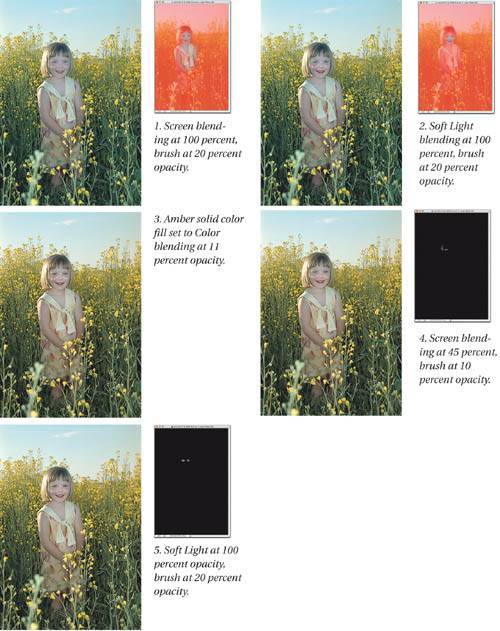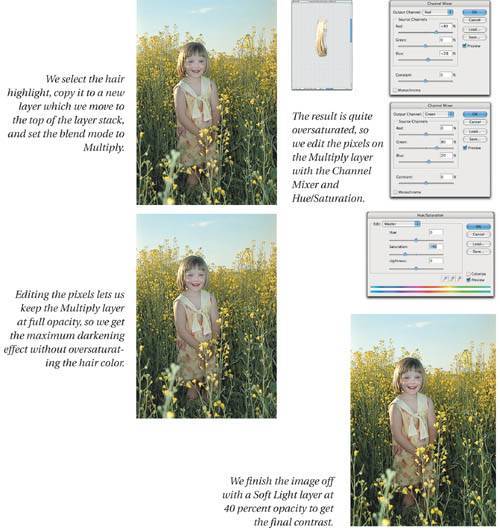Beyond Adjustment Layers
| Using "empty" adjustment layers to blend an image into itself is a very powerful technique, but sometimes, you may need to duplicate the image to a new layer, then edit the duplicate pixels themselves. The image shown in Figure 7-43 is an old favorite that we've used in the past to demonstrate several different techniques. The big problems are that the main subject is dark, flat, and a little blue. Figure 7-43. A problem image We can fix most of the problems using blend modes and layers masks as shown in Figure 7-44. We use Screen to lighten, Soft Light to add contrast, and a solid color fill set to Color for warming. All the masks were created using soft, low-to-medium-opacity brushes. Figure 7-44. Blend mode corrections The first layer set to Screen lets us paint some virtual fill-flash that lightens the subject. The second layer set to Soft Light lets us add contrast to the face with a single dab of the brush. The third layer applies a solid amber fill set to Color blending with a low opacity, and warms the whole image. The fourth layer set to Screen softens the shadows on the left side of the face. We're left with one remaining problem, the very bright highlight on the hair. If we simply add a masked adjustment layer set to Multiply, we can build density, but the result is also highly oversaturated. However, if we copy the actual pixels to a new layer set to Multiply, we can edit those pixels to produce a much more satisfactory resultsee Figure 7-45. Figure 7-45. A pixel layer set to Multiply In this case, we use the Channel Mixer to exploit the detail in the blue channel by replacing some of the red and green channels with blue, then we use Hue/Saturation to desaturate the pixels. Then, with the highlight fix in place, we apply one more Soft Light layer to get the final contrast. |
EAN: N/A
Pages: 220
- Structures, Processes and Relational Mechanisms for IT Governance
- An Emerging Strategy for E-Business IT Governance
- Measuring ROI in E-Commerce Applications: Analysis to Action
- Technical Issues Related to IT Governance Tactics: Product Metrics, Measurements and Process Control
- The Evolution of IT Governance at NB Power
